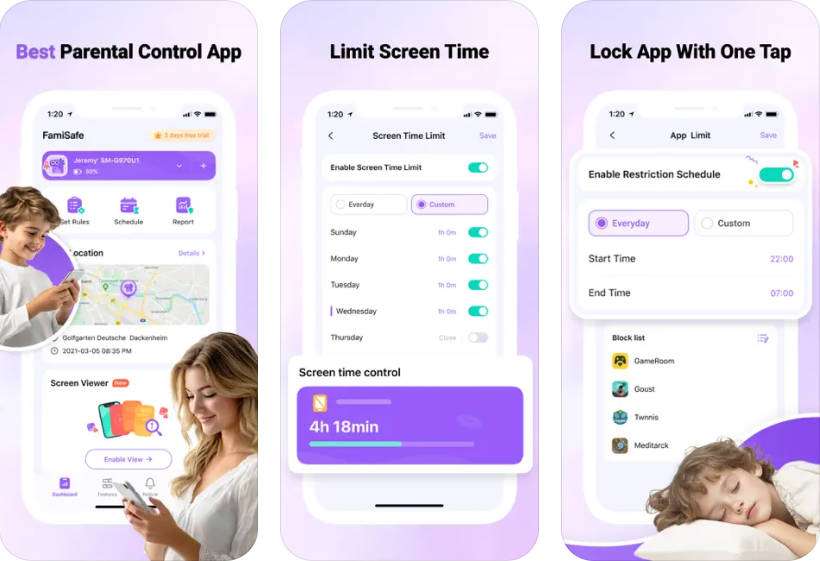From memes to text messages, the acronym IDGAF shows up everywhere. But what does it actually mean, how is it used in chats and on social platforms, and what should parents know? This guide explores the definition, tone, examples, cultural roots, and offers practical insights for families. Our aim is to combine cultural understanding with actionable advice—so readers leave informed, not just curious.

In This Article
Part 1. What Does IDGAF Mean?
IDGAF stands for “I don’t give a f***.” It’s a blunt way to say someone doesn’t care about a topic, request, or opinion. Unlike lighter alternatives like “IDC” (I don’t care), IDGAF is usually sharper and emotionally charged. Recognizing this distinction helps decode tone in online communication.
Emotional Tone Behind the Phrase
Teens often use IDGAF to shrug off stress, resist authority, or project confidence online. At times, it signals humor or sarcasm. Other times, it reflects deeper frustration or withdrawal. For parents and educators, repeated use may be a sign of stress rather than apathy.
Example Sentences with IDGAF
- “She can dislike my outfit—IDGAF.”
- “IDGAF about that rumor. It’s not true.”
- “Homework tonight? IDGAF, I’m crashing.”
- “IDGAF about the drama—mute.”
Each example shows how IDGAF compresses emotions into a few letters, masking whether it’s playful defiance or genuine detachment.
Part 2. How Teens Use IDGAF in Texts
IDGAF in Real Conversations
In one-to-one texts, IDGAF can downplay strong feelings (“I’m upset”) into a quick dismissal (“IDGAF”). In group chats, it can be performative—displaying a carefree persona that aligns with peer dynamics. Teens sometimes exaggerate detachment to avoid vulnerability.
Why Abbreviations Like IDGAF Spread
Abbreviations like IDGAF thrive because they save typing, fit character limits, and carry social identity cues. Using it shows awareness of online trends and offers shorthand for emotional expression. Similar to acronyms like “LOL,” its spread reflects how teens balance speed with self‑presentation.
Risks of Misunderstanding
Without tone markers, IDGAF may appear harsher than intended. Adults may misread it as outright defiance, while teens may see it as casual banter. This gap fuels inter‑generational misunderstandings. Encouraging kids to switch to clearer words in formal contexts can help prevent conflict.
Part 3. IDGAF in Slang & Pop Culture
How It Became Popular
IDGAF spread through music, memes, and internet culture. Artists from pop to hip hop have used it in lyrics to highlight rebellion or independence. Viral memes reinforced its popularity, making it a staple phrase for dismissive humor and bold identity expression.
Where It Shows Up Online
On TikTok, Instagram, and X, #idgaf is linked to posts about boundaries, confidence, and rejecting negativity. Teens often include it in captions or bios to project self‑reliance. While harmless in some contexts, frequent usage can normalize dismissive attitudes toward responsibility or authority.
Positive or Negative?
Used gently, IDGAF signals healthy detachment from toxic drama. Used harshly, it may shut down dialogue or escalate arguments. Like many slang terms, its impact depends on context, intent, and audience.
Part 4. IDGAF vs. Other Slang Terms
IDGAF vs. DGAF
DGAF removes the “I” but retains the same meaning. IDGAF feels more personal, placing responsibility on the speaker. Teens may choose one or the other depending on tone and audience.
IDGAF vs. IDK & IDC
Misspellings & Meme Variants
Common typos include “idgf.” Creators also swap in emojis or asterisks (e.g., “I don’t give AF”) to soften tone or skirt filters. These playful edits keep the slang adaptable across platforms.
Part 5. How Parents Can Talk About Slang Like IDGAF
Teens don’t always use slang like IDGAF to be rebellious—it can also be a shortcut to express stress or frustration. For parents, recognizing the context is key. Instead of reacting to the word itself, focus on the emotion behind it.
Starting the Conversation
Parents can open discussions by asking, “When you say IDGAF, what do you mean?” or “Were you trying to sound funny, or are you feeling upset?” This approach invites honesty without making teens defensive. The goal is to turn slang into a doorway for deeper communication.
Using Tools to Stay Informed
Modern parental control apps can help bridge understanding. FamiSafe alerts parents to risky words, monitors app activity, and sets screen time boundaries. Unlike snooping, it provides context that supports open dialogue.
Creating Family Language Norms
Families may set agreements such as: slang is fine in peer chats, but respectful tone is expected in family or school conversations. Shared rules reduce conflict and clarify expectations. For ongoing awareness, parents can explore guides like Teen Slang for Parents.

- Web Filter & SafeSearch
- Screen Time Limit & Schedule
- Location Tracking & Driving Report
- App Blocker & App Activity Tracker
- YouTube & TikTok History Monitor & App Blocker
- Social Media Texts & Porn Images Alerts
- Works on Mac, Windows, Android, iOS, Kindle Fire, Chromebook
Conclusion
IDGAF is more than a casual acronym—it’s a cultural marker of how teens express independence and stress. Understanding its meaning, context, and variations can help avoid conflict and build trust. For parents, pairing open communication with light‑touch monitoring tools like FamiSafe creates a balanced approach: supporting teens’ digital freedom while ensuring their safety.
Frequently Asked Questions
-
Q1. What does IDGAF mean in text?
It stands for “I don’t give a f***.” In texts, it conveys indifference or pushback. Tone ranges from playful to harsh depending on context. -
Q2. Is IDGAF rude or offensive?
It can be. Among close friends it may feel casual; in formal or inter‑generational conversations it often sounds disrespectful. -
Q3. What does IDGAF mean on TikTok?
Creators use it to signal empowerment, detachment from drama, or confidence. Hashtags and captions pair it with boundary‑setting themes. -
Q4. What’s the difference between IDGAF and DGAF?
The meaning is essentially the same. IDGAF includes the “I,” making it feel more personal and emphatic. -
Q5. How should parents respond when they see IDGAF?
Start by asking open questions and listening. Frame the conversation around feelings, not discipline. Parents can also use resources like FamiSafe’s teen slang guide for better context.



